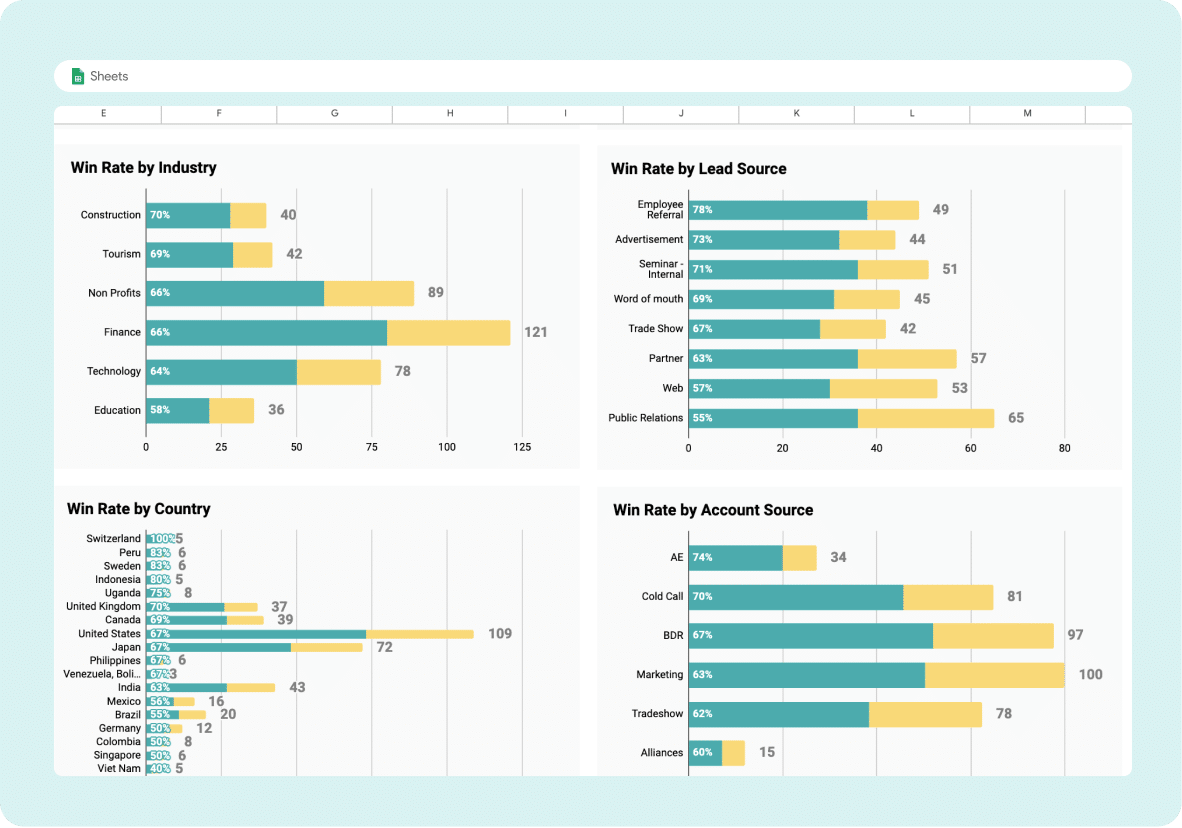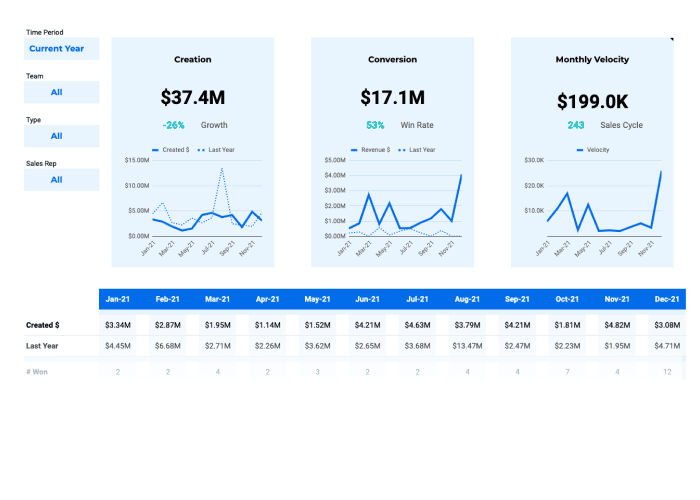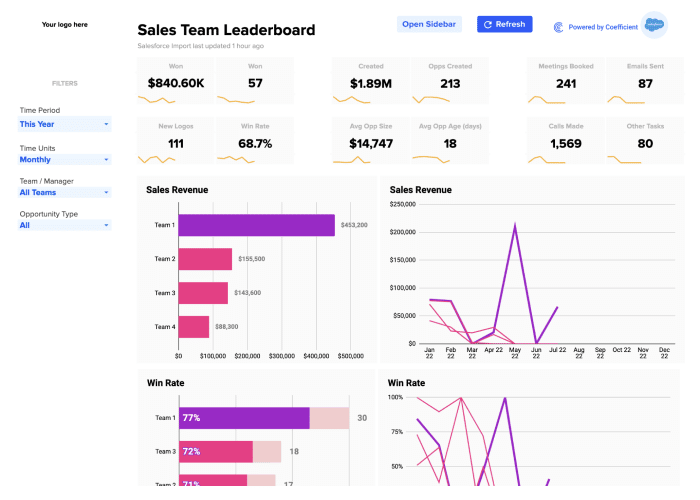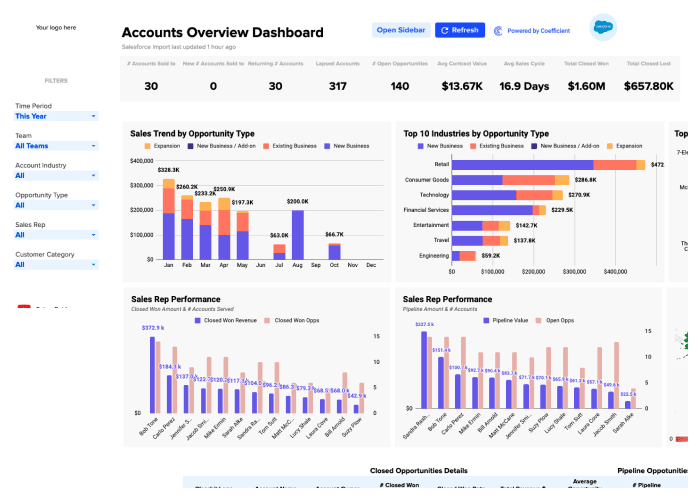Maximize Wins. Cut Losses. Accelerate Revenue.
Coefficient’s Win-Loss Template empowers sales professionals to monitor conversion rates across all sales units and reps using a centralized, pre-built Salesforce dashboard in Google Sheets to better inform your decision-making process. Accelerate revenue growth by reinvesting in winning initiatives, and cutting losing strategies quickly.
Launch our free Win-Loss Analysis Template in one click.
- Pinpoint how company, team, and individual win rates fluctuate over time.
- Identify performance trends early to double-down on wins or adjust your sales process where you have lower win rates.
- Generate a clean list of recently lost opportunities and why they failed.
- Receive a Slack or email alert every time a new deal is lost.
Why is it Important to do a Win-Loss Analysis?
Win-Loss analyses are a crucial part of any sales strategy as they help leaders understand what strategies are working – and which aren’t. This understanding provides valuable insights into team performance and can help increase win rates.
In addition to helping leaders refine their tactics, an in-depth analysis of wins and losses can help inform decisions to improve your organization’s products, services, messaging, or sales enablement efforts. They can also help give a sense of your competitive landscape and competitive advantages within your market.
Win Loss Analysis Best Practices
If used correctly, a win-loss analysis can serve as a powerful tool for continuous learning and improvement.
Follow these five best practices to ensure you’re getting the most out of your win-loss program:
- Regular Review and Update: Continually review and update your analysis to reflect current market conditions and business strategies. Coefficient’s Auto-Refresh functionality ensures your data remains up-to-date, providing accurate insights.
- Involve Relevant Stakeholders: Win-loss analysis should be a collaborative effort involving all relevant stakeholders. This includes not only the sales team but also marketing, product development, and customer service teams. Each team can provide unique perspectives that can enhance your analysis.
- Consistent Methodology: Use a consistent methodology for evaluating wins and losses. This ensures the accuracy and reliability of your analysis. Consistency in your approach allows for more accurate comparisons and trend identification over time.
- Objectivity: Be objective in your analysis and avoid bias to ensure you look at data from all different angles. This includes considering any factor that could’ve influenced the outcome of a deal, including product features, pricing, competition, and sales tactics.
- Automation and Data Integrity: Leverage automation tools like Coefficient to save time, reduce errors, and ensure data integrity. Automating data sync between Salesforce and Google Sheets improves data accuracy and allows you to focus more on analysis and strategy.
How do I do Win-Loss Analysis in Google Sheets?
There are two simple ways to do win-loss analysis in Google Sheets,
1. Manually export – Exporting your CRM data manually as a CSV every time, upload it into your sheet, and then calculate your win and loss rates.
2. Pre-built connector – Using a solution like Coefficient to automatically pull data regularly from your CRM directly into Google Sheets for analysis.
What is a Good Win-Loss Ratio in Sales?
A good win-loss ratio is unique to every company, depending on its industry and specific goals. However, a ratio above 50% is generally considered good, indicating that more deals are being won than lost.
That said, benchmarking your win-loss ratio against industry averages is useful. The average win rate across industries is 47%.







